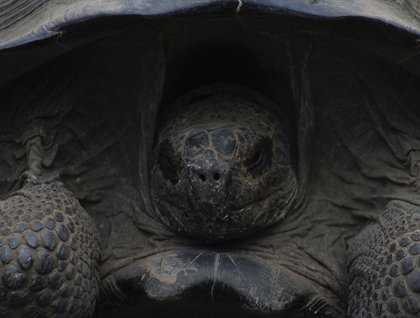We already have seen many wonderful creatures in this archipelago but that did not stop us from exploring the largest island of the Galápagos. After breakfast, we set foot for the first time on Isabela Island at Urbina Bay. Its coast looks uninviting, being dominated by jagged lava called A-A. Around sixty years ago, this area was under the sea, but a sudden volcanic event uplifted this stretch of coast, leaving marine creatures like coral heads, fish, sea turtles, and many other creatures stranded out of the water. Nowadays, a loop trail takes us from the coast into the island; there are large areas of sand, soft pumice, and compacted volcanic ash, and together with the abundant vegetation this provides the perfect habitat for the land iguanas. These endemic dragons feed on smalls leaves, fruits, and flowers. In fact this species is able to support long shortages of freshwater. In recent times, a small population of giant tortoises has made the Urbina Bay area their home, and in fact today along the path we got to see four of them.
After lunch, we navigated further north along the western coast of Isabela Island. This coastline is quite titanic, with its many tuff cones, craters, and black lava flows that meet the ocean, creating a beautiful contrast of colors.
We finally dropped anchor at Tagus Cove. Since the early 1800s this place has been visited by many vessels as it offers a safe anchorage and occasionally there is freshwater in the vicinity. Many sailors carved or painted the names of their vessels and the year of their visit, a tradition that is no longer allowed by the Galápagos National Park Service. Tagus Cove is located between two massive tuff cones, and the coastline is stunning. Here one can spot a few of the Galápagos penguins, flightless cormorants, brown pelicans, and blue-footed boobies, as well as sea lions. From here, there are great views of the nearby craters and volcanoes of both Isabela and Fernandina Islands.
We hiked up to view the amazing landscape of Darwin Lake. A beautiful sightseeing place allowed us to enjoy the pristine air and panorama of the enchanted archipelago! Upon our return to National Geographic Islander, the sun was setting, announcing the rise of the moon!
What a day to start the New Year 2014!







